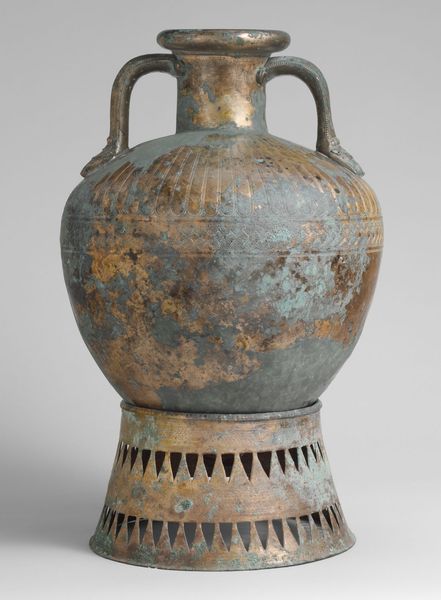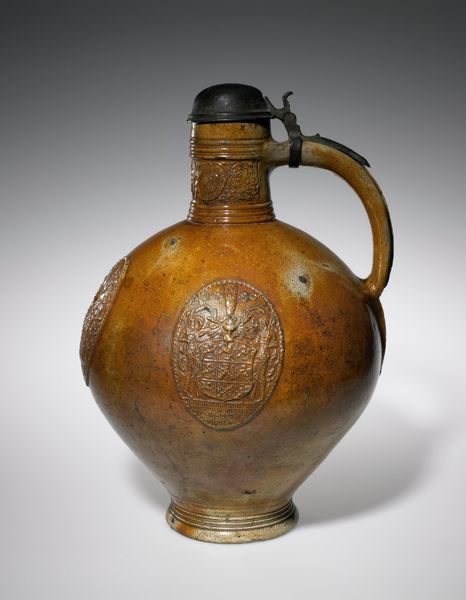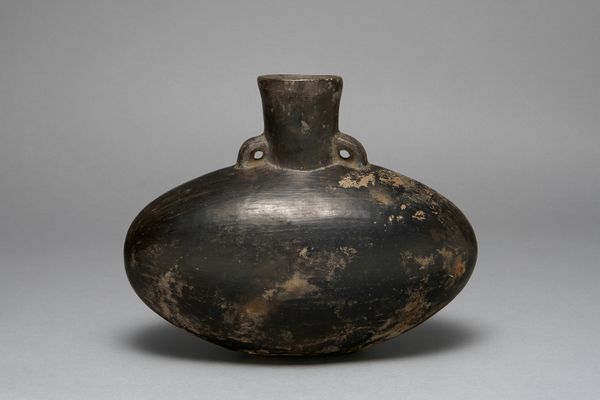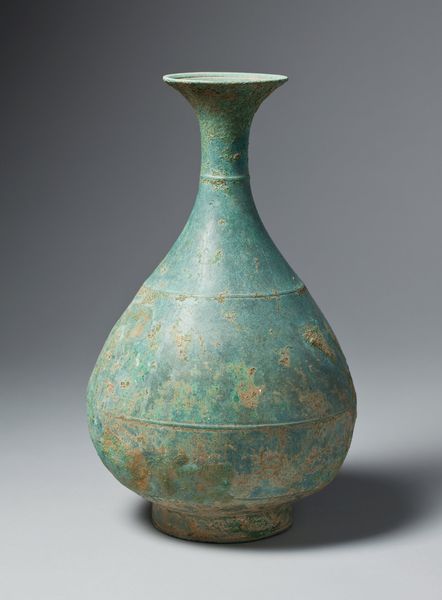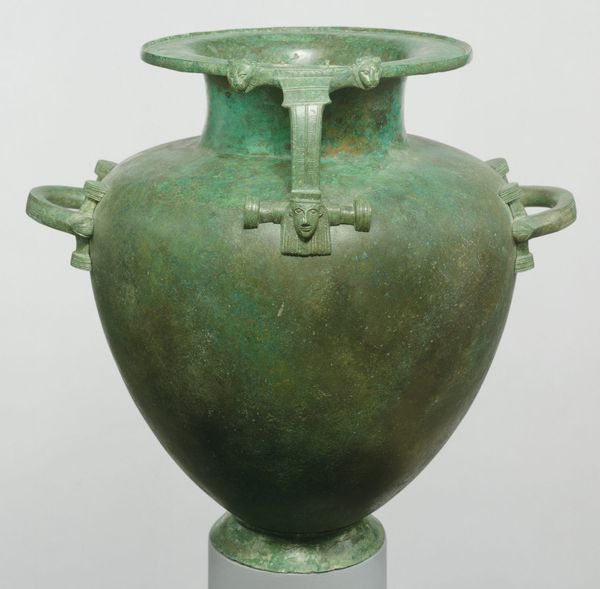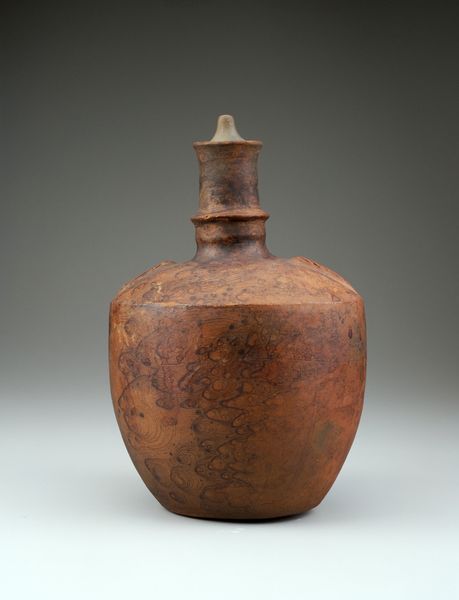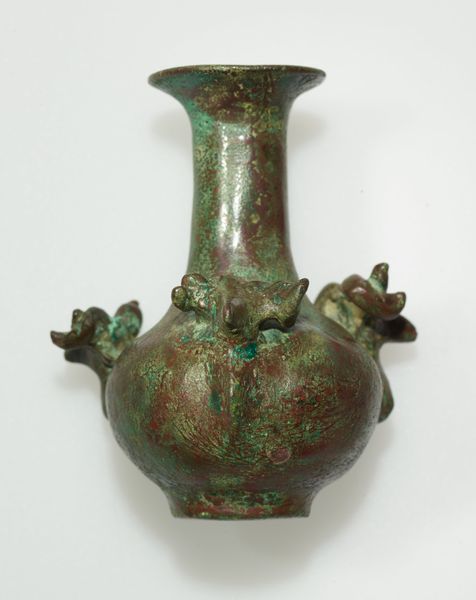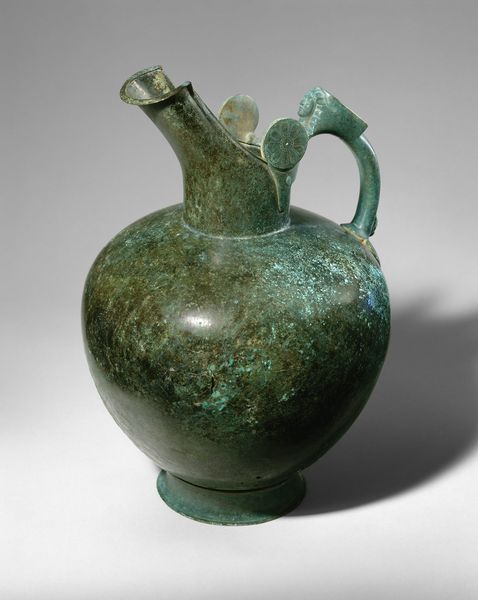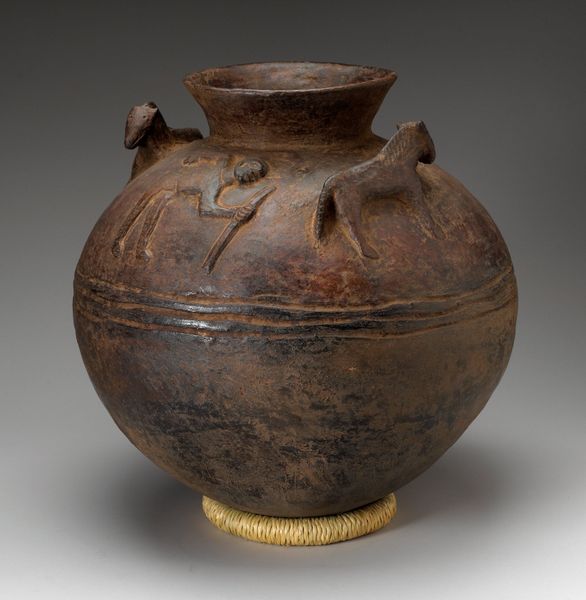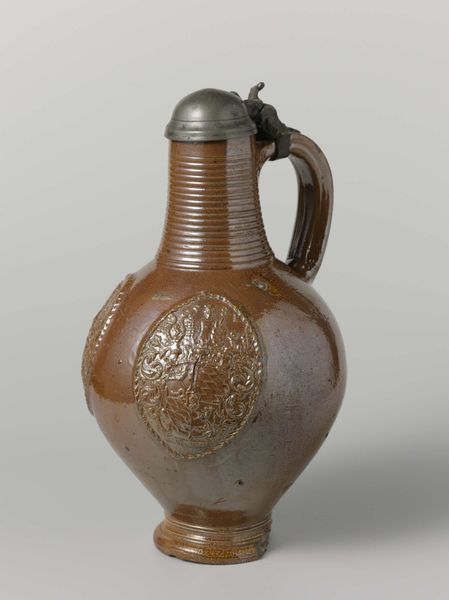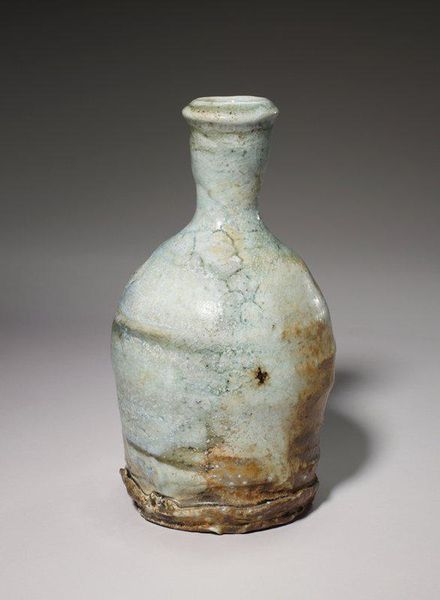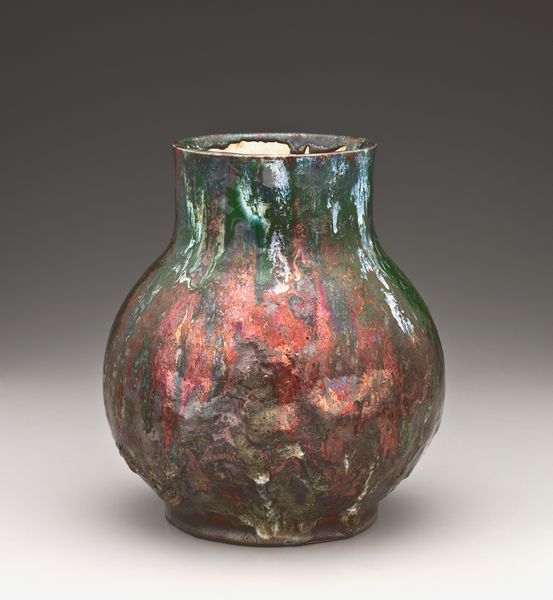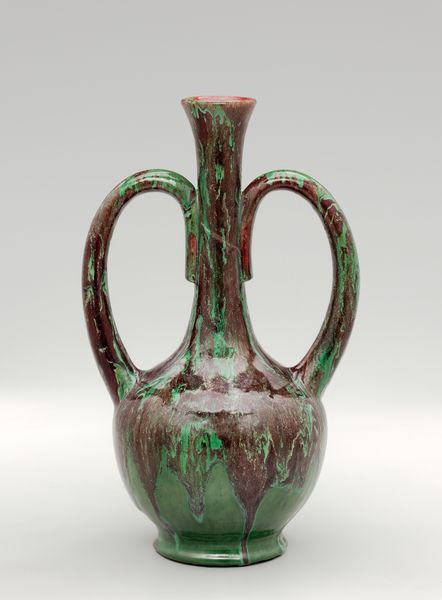
Bronze Neck Amphora (jar) with Lid and Bail Handle 515 BC
0:00
0:00
metal, ceramic, bronze, sculpture
#
pottery
#
metal
#
greek-and-roman-art
#
ceramic
#
vase
#
bronze
#
ancient-mediterranean
#
sculpture
#
ceramic
Copyright: Public domain
This Bronze Neck Amphora was created in ancient Greece, sometime between 900 and 31 BC. The metal was likely formed by hammering and joining sections together, creating a strong, if heavy, vessel. You can see the seams along its body. Bronze, an alloy of copper and tin, was highly valued for its durability, making it ideal for containers used to transport liquids or store goods. The color is also a deep golden tone, indicative of its metallic composition, while the green patina speaks to centuries of oxidation and burial. The bail handle, lid, and decorative elements around the neck suggest a combination of functionality and artistry. The making of bronze objects in ancient Greece involved specialized skills and labor, from mining the raw materials to smelting and casting the metal. The creation of this amphora also reflects the economic and social structures of the time, where specialized craftsmen played a vital role in producing objects for both practical use and display. The sheer amount of work would have been substantial, the kind of project to fill many days or weeks, and this must have had a definite impact on its cultural value. When we consider its material, the production process, and its historical context, we gain a deeper appreciation for the craftsmanship, utility, and the cultural significance of this Bronze Neck Amphora.
Comments
No comments
Be the first to comment and join the conversation on the ultimate creative platform.
